PHYSIOLOGY WEEK 2024 – A STUDENT’S PERSPECTIVE
Why engagement matters? Improving understanding about people’s own physiology
Eva-Mae is a recent Biology graduate from Royal Holloway, University of London. This September, she’ll be starting a master’s in Science Communication at Imperial College London. In this blog, Eva-Mae shares why a Physiology Week outreach programme helped engage people’s curiosity in physiology to learn more about their health.
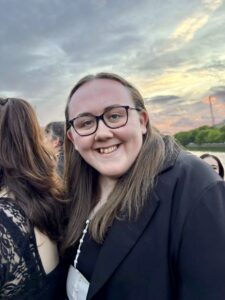
My interest in science communication became more apparent during my final year at Royal Holloway. For my third-year project, I chose to work with Dr Lydia Hanna on a project titled “Evaluating the Effectiveness of Science Communication: A Student’s Perspective on Using Physiology Week as an Outreach Platform.” This project stood out to me immediately, because science communication plays a vital role in helping the public better understand scientific concepts. I believe this is especially important in the field of physiology, as it’s a subject that connects directly to our everyday lives – our sleep, digestion, heart rate, and so much more.
Physiology outreach
To engage the public with key concepts of physiology, we hosted a Physiology Week outreach stand at Royal Holloway (November 2024). I was one of the science communicators, and I worked alongside Dr Lydia Hanna and Dr Philip Chen (who are both Lecturers in Biomedical Sciences at Royal Holloway).
We chose to run five physiology outreach activities:
• The Circadian Body Clock (guided activity)
• The Healthy Sleep Wall (self-guided activity)
• Eat, Poo, Sleep (reaction times) (guided activity)
• Electrocardiogram (ECG) (guided activity)
• Histology of the Small Intestine (guided/self-guided activity)
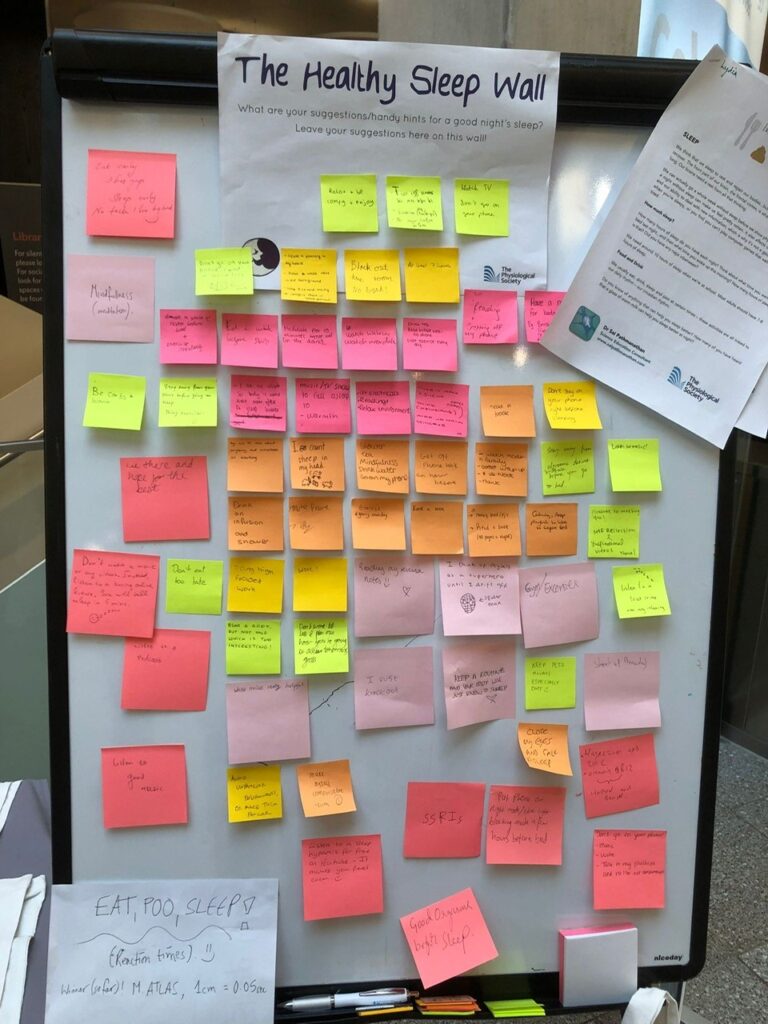
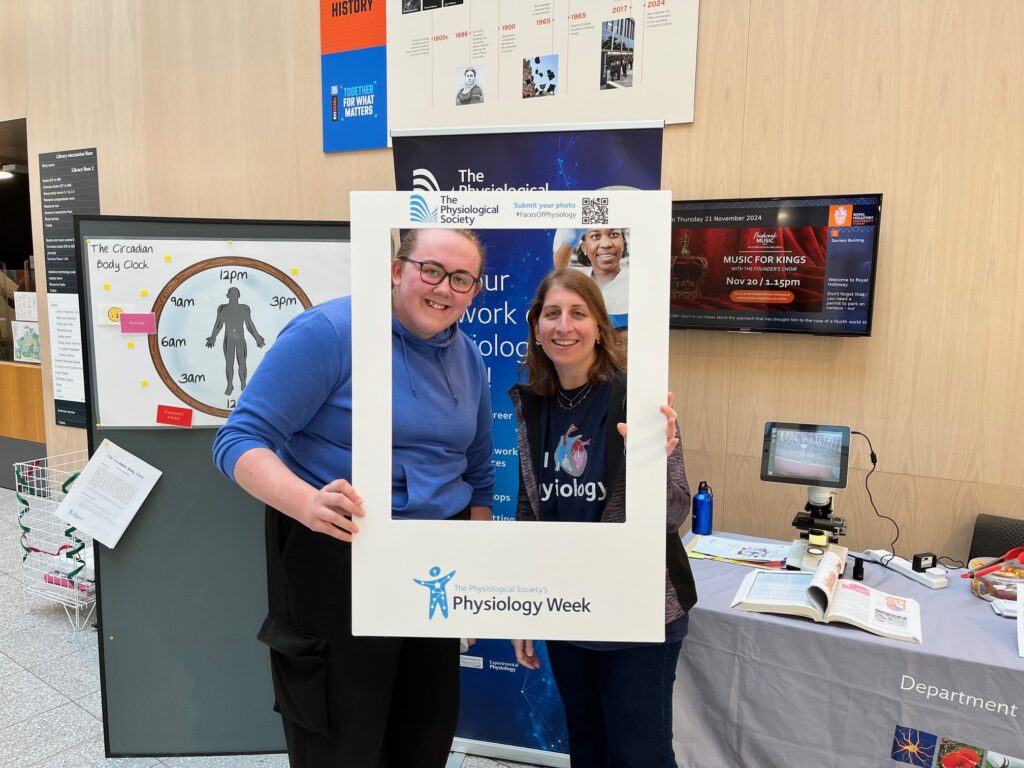
Figures 1&2 – Responses to the Healthy Sleep Wall activity and Eva-Mae and Dr Lydia Hanna stood in front of our Physiology Week event.
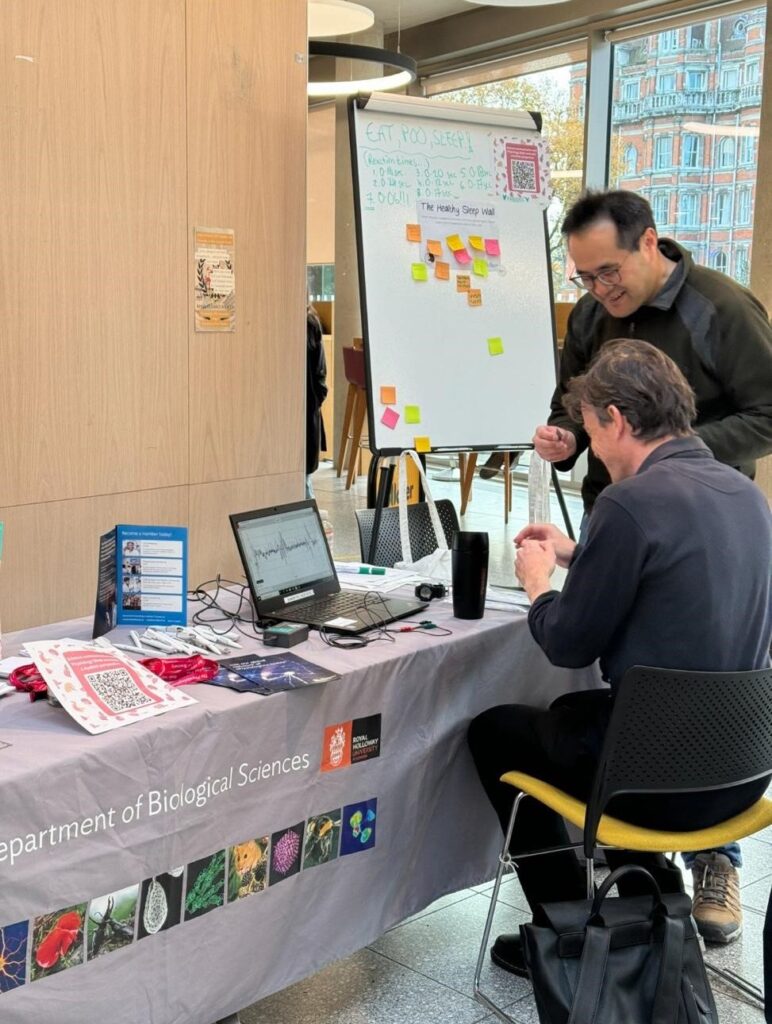
Figure 3 – Dr Philip Chen demonstrating the ECG equipment on a participant.
The first three activities were chosen from the Physiological Society’s outreach resources, while the ECG and histology activities were inspired by our taught undergraduate practical sessions. Our goal was to encourage hands-on, interactive learning, enabling the public to engage with the activities, so to promote a deeper understanding of (their own) physiology. Over the two days we ran the event, we estimated 100-150 people visited the stand, the majority being university students.
Encouraging hands-on, interactive learning
To assess the effectiveness of the event, we invited people to chat with us, to of course engage with our activities, and provided them with the option to later participate in an anonymous, voluntary online survey. A total of 32 participants responded. We collected demographic information and used the Likert scale to measure confidence ratings. The participants were also invited to share their thoughts on their experience, discussing interest and motivation, understanding and knowledge, clarity and ease, engagement and benefit, and overall satisfaction.
One of the most significant findings was that there was a clear increase in participants’ confidence in their understanding and knowledge of physiology after participants had taken part in the event, compared to before. This is a powerful indicator that even a short outreach activity can make a meaningful difference in how different people feel about science and their ability to understand it.
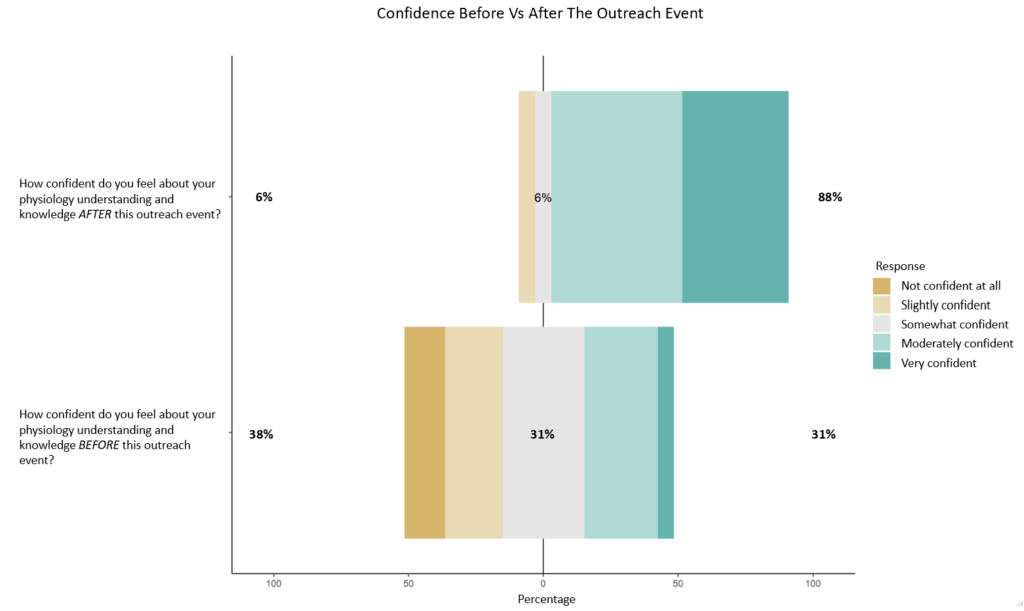
Figure 4 – The distribution of self-reported confidence levels regarding participants’ understanding and knowledge of physiology before and after the Physiology Week outreach event. Shows the percentage of respondents who selected each confidence level: “Not confident al all,” “Slightly confident”, “Somewhat confident”, “Moderately confident”, and “Very confident”.
We also gathered feedback through Likert scale questions. Across all six categories, most participants scored a 4 (“Agree) or 5 (“Strongly Agree”).
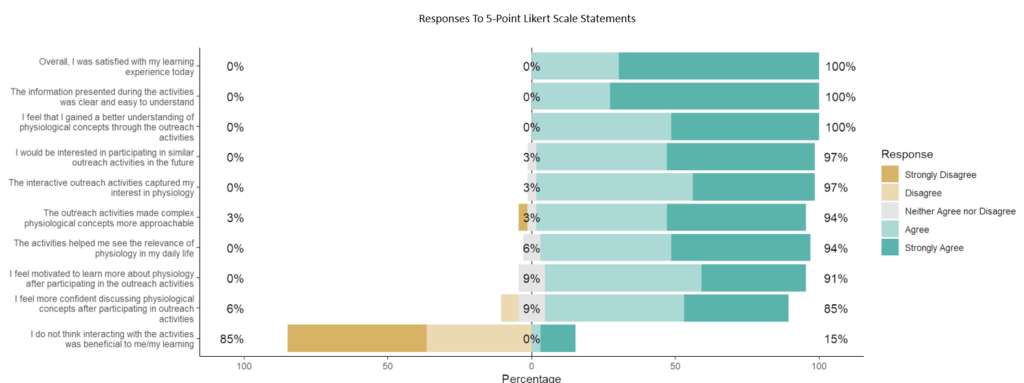
Figure 5 – Responses to 5-point Likert scale statement assessing effectiveness of the outreach event. These questions fit into one of the following 6 categories: confidence, interest and motivation, understanding and knowledge, clarity and ease, engagement and benefit, and overall satisfaction. The scale ranged from “Strongly disagree”, “Disagree”, “Neither agree nor disagree”, “Agree”, and “Strongly agree”.
Building a connection through personal relevance
One of the most frequently mentioned activities in the open text feedback was about the Circadian Body Clock, ‘Circadian body clock, very informative and interactive’, ‘I could relate the information to personal experiences’.
A consistent theme in the responses was personal relevance. Many participants enjoyed activities because they could reflect on how the information applied to their own lives. For example, ‘It was insightful to learn how night shifts have affected my sleep pattern’, highlighting how the event had helped this person to connect scientific concepts with their everyday lives.
When science is shared in an engaging, accessible way, people are more likely to feel confident, curious, and connected to it. Many people view science as ‘too complicated’ or ‘not for them’, but this event showed that with the right tools, language, and environment, those barriers can be broken down. As I prepare to begin my master’s in science communication, this experience has only enhanced my belief in the power of clear and thoughtful outreach.
Five tips for carrying out your own engagement event
If you’re a student, educator, researcher, or simply passionate about science communication, you can create an event like this too! Here are a few tips based on what worked well for us:
• Start with your audience: Think about who you want to reach and tailor your activities accordingly.
• Keep it interactive: Hands-on activities, physical models, and games help make science more memorable and fun.
• Use existing resources: The Physiological Society, and many other science organisations, offer free outreach resources that can be used.
• Choose a visible location: Hosting your stand in a high-traffic area helps to attract engagement from passers-by.
• Gather feedback: A short, anonymous survey (with ethical approval from your institution) can help you to measure the impact of your activities, giving you valuable insight into what worked and what could be improved.
Whether you’re focusing on physiology, conservation, climate science, or any other topic, science communication doesn’t have to be complicated to be effective. I believe that with curiosity, creativity, and a bit of planning, anyone can help bring science closer to the public.

